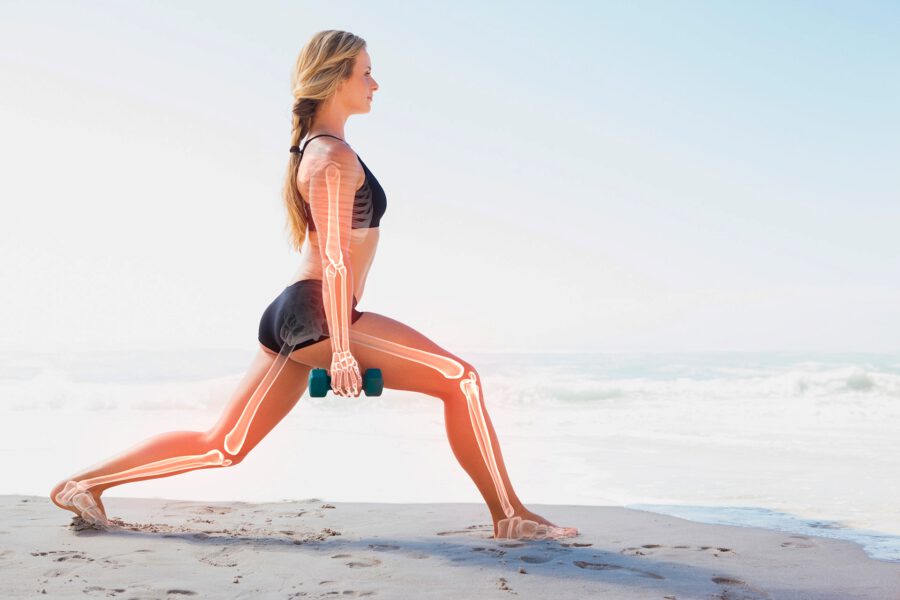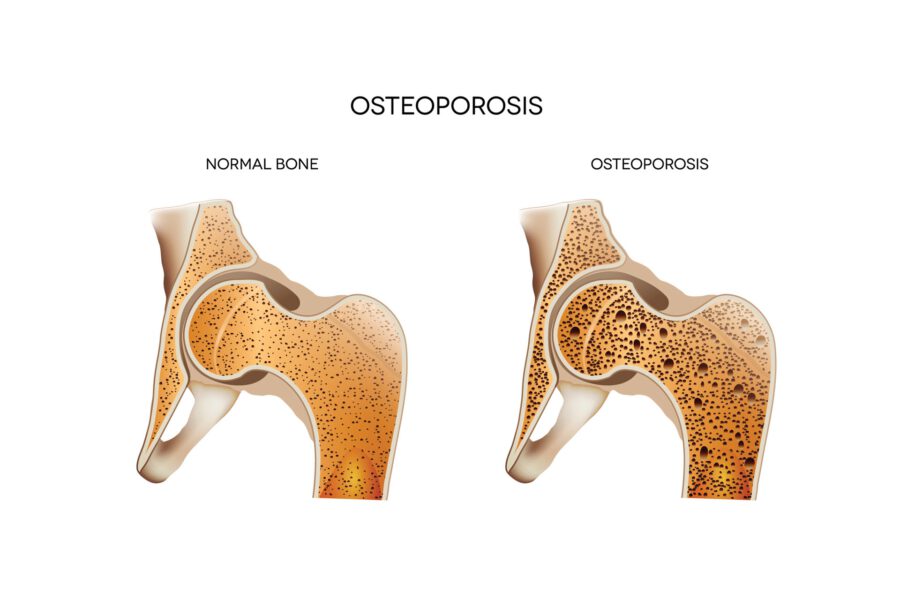How Exercise can Impact Bone Health and Combat Aging
Bones are critical structures of the human body. They support our frame, protect organs, anchor our muscles, and store calcium. When muscles contract, bones and joints are pulled, resulting in movement. Your bone mass peaks in your late 20s to early 30s and then starts to decline naturally.
Aging is a fact of life. Unfortunately, our bones weaken as we age, making us susceptible to bone and joint diseases such as osteoarthritis. Even worse, these diseases cause pain and discomfort, affecting our quality of life and preventing us from doing what we love.
But could we do something to combat the negative effects of aging? If so, can exercise preserve bone health? Does aging necessarily have to mean being weak and fragile?
This article will dive deep into the science of bone health, how exercise impacts these crucial structures of our body, and how we can mitigate the effects of aging.
Bones are living tissues that are constantly changing and remodeling. As you are reading this article, your bones are deconstructing and reconstructing themselves.
When you exercise, every stride, jump, and rep places dynamic stress on your bones, setting off a cascade of cell activities that strengthen them. The right types of exercise provide the perfect stimulus to keep your bones strong and dense throughout this lifelong remodeling process.
Bone tissue consists of an inorganic mineral called hydroxyapatite and an organic protein called collagen. The collagen provides tensile strength to resist pulling forces, while the hydroxyapatite minerals allow bones to withstand compression. You need exercises that apply tension and compression to stimulate remodeling and keep your bones strong.
Physical activity allows bone tissues to constantly repair and rebuild themselves.
Increases bone density and strength
According to Wolff's law, the bones adapt to the loads and stress they are placed in. When you perform weight-bearing exercises, the mechanical stress stimulates new bone formation and remodeling.
Exercise and physical activity strengthen bones, making them harder to break. That's why you see trained mixed martial arts fighters with tremendous power behind their kicks without cracking their bones.
Resistance training also stimulates bone formation by causing microfractures that are then reinforced.
Osteoporosis causes over 1.5 million bone fractures annually. Fortunately, exercise can combat the effects of osteoporosis and keep bones healthy and less susceptible.
In one review, researchers revealed that exercising 3-5 times per week for 30-60 minutes can reduce the risk of hip fracture by up to 60%. The higher the physical activity levels, the lower the risk of having osteoporosis as we age. Weight training and high-impact exercises involving jumping can reduce the odds of osteoporosis in older adults.
Insufficient calcium and other minerals in the bone can make it weaker. An exercise routine centered on resistance training, which includes weightlifting and using resistance bands can help retain more calcium in your bones.
Strength training exercises that target the back and core improve posture and spinal alignment. Having optimal posture can prevent muscle imbalances and take the pressure off the bones and joints, allowing you to prevent pain, discomfort, and wear and tear in the long run.
Having good posture also improves mental health and boosts confidence..
Exercise increases hormone estrogen and testosterone levels, which help stimulate bone formation and slow bone breakdown.
Falling is the leading cause of fractures and major operations, especially in older adults. Exercise that challenges balance and engages the core, like yoga, tai chi, and Pilates, improves stability and coordination, thus minimizing the risk of fractures due to falls.
Weight-bearing exercises improve balance and proprioception — the awareness of one's own body position. Studies have shown that 2-3 times per week of exercises that involve coordination, such as yoga and tai chi, can reduce the risk of falls.
The short answer is 'no'.
With age, the remodeling process becomes less efficient. The bone deconstruction/resorption rate begins to exceed the bone formation rate, leading to a decrease in bone density and strength. In addition, crucial hormones for maintaining bone density, such as testosterone and estrogen, significantly drop when people reach their early 40s.
Although aging is often associated with a decline in bone strength, having weak bones is not an inevitable part of aging. The key is to engage in activities that boost bone formation.
While it may seem counterintuitive that the repetitive impacts involved in exercise could strengthen rather than wear down bone, the science behind it makes perfect sense. Bones are living tissues that are constantly broken down and renewed. Exercise tilts this balance toward bone build-up by putting force on bones that trigger the need for new bones to form.
The more physically active you are, the better your bones can adapt to maintain strength.
Regardless of your age, a sedentary lifestyle is your enemy. The human body is designed to move, and just like your muscles, inactivity can lead to bone weakness.
Lack of activity causes cells that absorb bones to work overtime, which can eventually lead to an increased risk of injuries such as fractures.
Astronauts returning from space provide a dramatic example of bone loss from inactivity. Without the mechanical forces of gravity, their bone density dropped significantly. On the other hand, athletes who strength train typically have greater bone density than non-athletes. Their bones have adapted to become stronger from exercise.
What you don’t use, you lose.
| Exercise | Activities |
| Weight bearing aerobic exercise | Walking, jogging, hiking, dancing |
| High-impact exercise | Jumping ropes, plyometrics, burpese |
| Resistance training / Strength training | Calisthenics, weight training, compound exercises such as squats and deadlifts |
| Balance and coordination exercises | Yoga, Pilates, dancing |
| Endurance exercise | Stairmaster, stair climbing |
| Power moves | Sprinting, agility drills like ladder drills |
Here’s a workout program for women to get stronger muscles and bones:
And for men:
While aging naturally decreases bone strength, research shows staying physically active can significantly slow bone loss and reduce fracture risks. Regular exercise provides the loading and muscle tensions that strongly stimulate bone remodeling. Weight-bearing activities like walking, hiking, and strength training put beneficial stresses on bones, keeping them adapting and rebuilding over time.
Staying active allows lifelong bone remodeling, keeping your bones resilient despite aging. Don't let inactivity team up with aging against your bones - fight back with regular exercise to maintain strength and stability as you get older.


